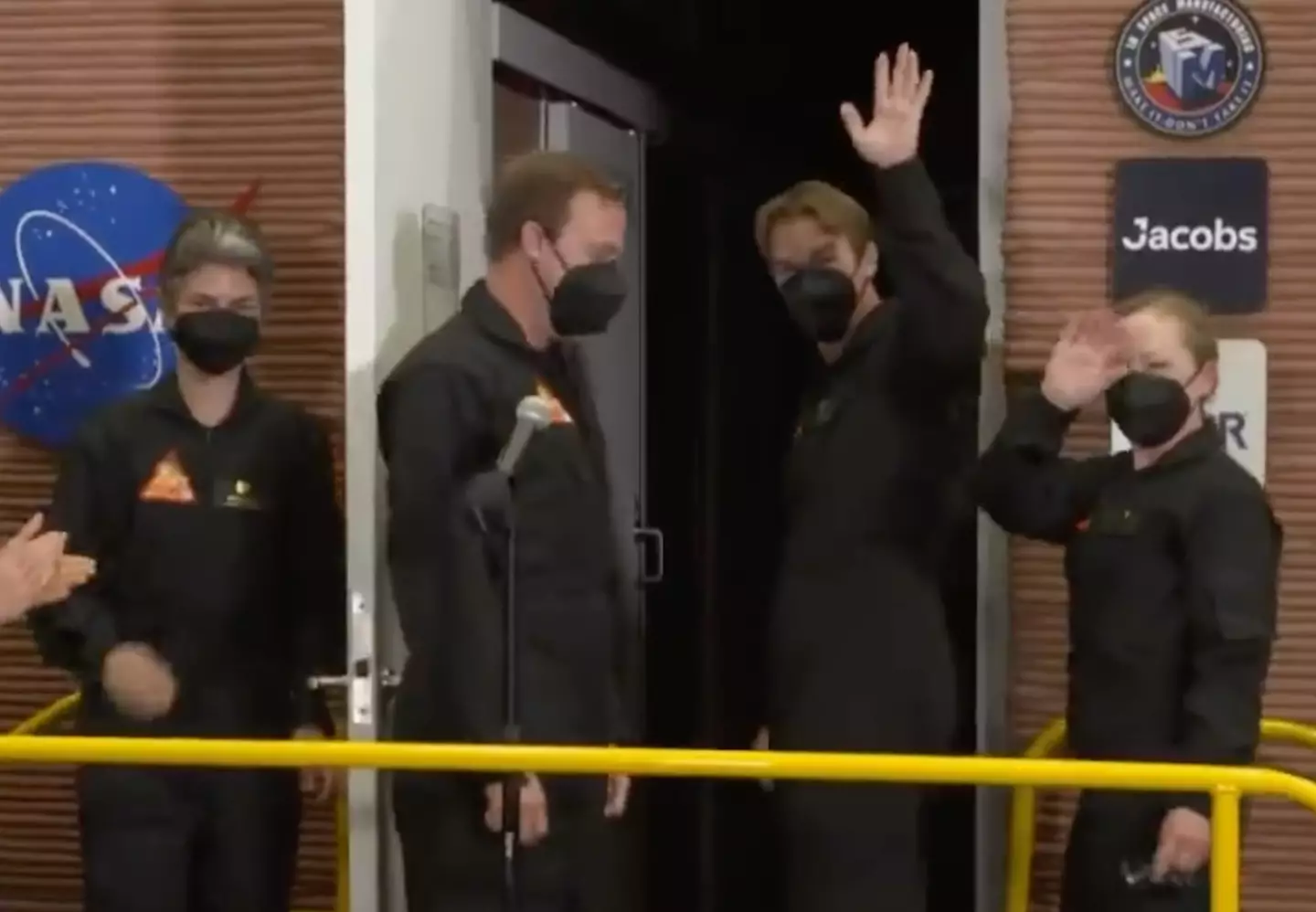Ever wondered what it would be like to live on Mars? Well, four people are about to find out as they've been locked inside NASA's simulator for the planet for the next 378 days.
If all goes to plan, it will be July 2024 by the time research scientist Kelly Haston, structural engineer Ross Brockwell, emergency medicine physician Nathan Jones and microbiologist Anca Selariu emerge from the simulation.
The year-long CHAPEA (Crew Health and Performance Exploration Analog) mission is the first of three simulated Mars missions which aim to provide insight to the health and performance of crew members tasked with living in a confined space with limited resources.
Advert

Just like they'd have to do if they travelled to Mars, the volunteers will live and work in the 158-square-metre habitat, which has been 3D-printed and is actually located at NASA's Johnson Space Center in Houston, Texas.
To make the experience as realistic as possible, the crew will experience communication delays and environmental stressors as they are tested on their resilience to isolation and other psychological stress factors.
While inside, they will take part in activities including crop growth, simulated spacewalks, habitat maintenance and science experiments.
The chamber includes private crew quarters and two bathrooms, as well as dedicated areas for recreation, fitness and work to keep the volunteers busy during their lengthy stay.
Advert
Grace Douglas, CHAPEA principal investigator, explained: "The simulation will allow us to collect cognitive and physical performance data to give us more insight into the potential impacts of long-duration missions to Mars on crew health and performance. Ultimately, this information will help NASA make informed decisions to design and plan for a successful human mission to Mars."

Haston, Brockwell, Jones and Selariu were chosen to take part in the experiment after NASA put out a call in 2021 for 'healthy, motivated' applicants to take part.
They were selected using the same criteria NASA uses to select astronauts, meaning they required masters degrees and professional experience in the STEM field or extensive experience piloting an aircraft.
Footage shared by the space agency shows the four volunteers waving goodbye to cheering onlookers as they made their way inside the habitat, before the door was closed behind them.
Advert
As the group prepared to make their way in, Julie Kramer-White, Director of Engineering at NASA, said: “These long duration mission simulations really bring Mars closer to us. They help us realize Mars is within our reach as we try to address the issues and challenges that will face us in these long missions.”
NASA is aiming to carry out the next two missions in 2025 and 2026.